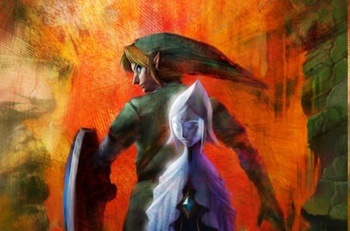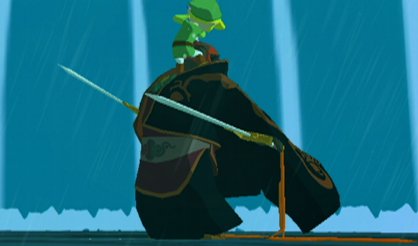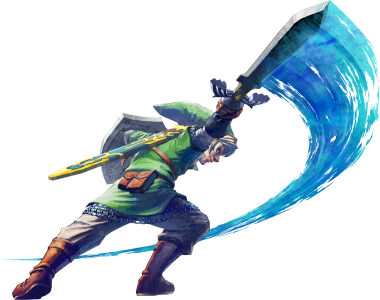It’s no wonder that The Legend of Zelda remains a beloved series for so many people. It’s got the dual advantage of reaching such a wide audience, pushing all our happy nostalgia buttons, and of being a genuinely well crafted and legitimately touching experience. It’s hard not to have played any of the games in your past and not get a little misty-eyed on the eve of a new console Zelda.
Console Zelda’s don’t come around very often, so when they do it’s time for a little bit of a celebration. It’s time to scour youtube for those melodies that were the soundtrack to your first adventures, it’s time to pull down your old gameboxes from off the shelf and give them a fond look-over and above all it’s time to have a gooey, nostalgia-laced writing piece all about the series.
Zelda games have always been immaculately designed and have always had the advantage of great controls. From a purely functional point of view the games have always been stand-outs for excellence. However the mechanical celebration of Zelda is nothing compared to the emotions the games still manage to evoke. The Legend of Zelda…you’re a brilliant, wonderful and touching series and here’s exactly why…
Ocarina of Time was big. It was time for Nintendo to plunge one of its mascot franchises into the third dimension. Would they do it with the same kind of confidence that Mario had leaping into 3D? Luckily this is Nintendo we’re talking about, so they did it with all the grace and skill of true artisans. What resulted was, of course, one of the most iconic adventure games of all time.
Ocarina of Time set a precedent for the Zelda series, not just in laying down the design framework, but also a thematic one. Ocarina of Time is ostensibly about time itself. More often than not the Legend of Zelda series is a coming of age story – the eternal tale of a boy who becomes a man. The Legend of Zelda is about growing up, about the inescapable, inevitable flow of time that delivers us from childhood to adulthood. Zelda games are about that discovery.
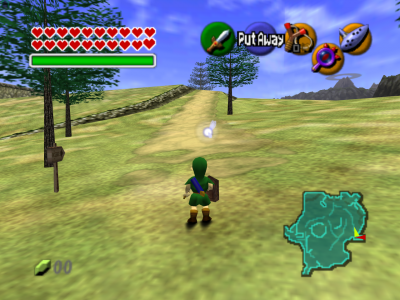
The very first time I escaped the Kokiri Forest and saw Hyrule Field rolling out in front of me to an orchestral trill I could see an epic adventure waiting for me. Zelda has always been about growing up and discovering the world. When you leave your forest playpen you can be forgiven for thinking that your childhood days are behind you – that in making the journey across the field to the moat of Hyrule Market Town you’ve become an adult. How very wrong.
I had thought that the first third of Ocarina of Time was tough. I thought that finding the Kokiri Sword, banishing Queen Gohoma and working out the intricacies of Jabu-Jabu’s Belly were difficult feats. After I ran away quite literally screaming from Princess Ruto’s offer of marriage, all three magic stones in hand, I thought I was off to stop the immense evil before it had even started. How very wrong I was. Ganondorf made it to the Sacred Realm and instigated seven years of hellish rule on the people of Hyrule. When you awake from your slumber as an adult you truly see that what came before as a child was a mere training exercise.
Walking out of The Temple of Time and seeing what had become of Hyrule Market was a shocking moment to me. Before, I had been happily running through the back alleys, chasing strays and playing minigames in the town square. Later on that same place of respite has become nightmarish. The pair of lovers stood spinning in one another’s arms became replaced with hideous Re-Dead’s whose hellish screams froze you to the spot. The message is clear: You’ve grown up now. You might have thought things were tough back then, but this is the real challenge. Now the real game begins. While you play as adult Link you visit a lot of Hyrule previously kept away from you. New items and new abilities open up areas of the world that were simply off-access to you. It’s all part of getting older, but you also re-visit plenty of places. It’s these that hit the hardest for me. Seeing my idyllic childhood home overrun with monsters was genuinely saddening and only heightened my resolve to save this world.
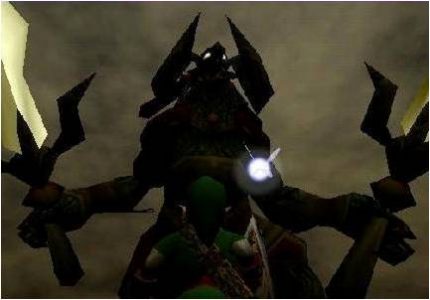
Direct sequels don’t happen often in the Zelda universe but the only console one was perhaps my favourite outing ever. Majora’s Mask took the format laid down by Ocarina of Time and smashed it to bits. Our hero, having been given his childhood back at the end of Ocarina of Time winds up in the parallel world of Termina, searching for his lost friend Navi. What Link finds is a world threatened by the chaotic demon Majora and he’s doomed to repeat a three day cycle until he can puzzle out a way to beat the spirit.
Majora’s Mask oozes personality in a way Ocarina of Time never quite managed. The intro movie begins with a happy, plodding tune as Link wanders around Clock Town, watching its citizens go about normal life. Suddenly the music takes on a sinister tone, and darker sounds stir in the background. Then the camera pans up to the moon, huge, looming and ominous, with the masked skull kid watching with an eerie stillness. Majora’s Mask is happy to put on a facade of innocence, only to reveal its darker intentions once it has you snared.
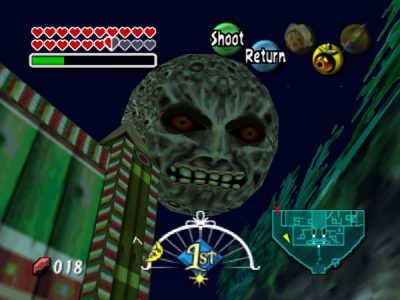
Majora’s Mask still keeps with the coming of age theme laid down by its predecessor. As you progress through the game you gain the mastery of differing forms. First the childish Deku scrub, then as your original Hylian form, then as the mighty clan leader Darmani and the committed Miku. As you progress through the game the masks you wield mirror yet another coming of age. The three day cycle the chaotic Majora has doomed you to is a death sentence to immortality. Like how in Ocarina of Time you had to escape the Kokiri forest so too must you shatter the cycle and begin a new day in Majora’s Mask. When you encounter Majora on the ethereal surface of the moon it’s as a masked child. Here you must defeat the capricious demon – the naughty child – and force everyone into the future kicking and screaming if needs be.
Ocarina of Time cast its enormous a shadow across all of the Zelda series, and rightly so. While the later Twilight Princess attempted to emulate much of Ocarina, it was Wind Waker that seemed to consciously push away from it the most. Wind Waker was of course divisive for its massive graphical departure and looking back this seems utterly ridiculous. The game looks fantastic even by today’s standards. Radically different visuals mirror an entirely new method of adventure as Link took the Great Sea. Wind Waker for me had some of the best music of the series. The triumphant, aquatic wail of the Great Sea theme and the humble pan pipes of Dragon Roost will forever be lodged in my mind.
Starting from humble beginnings you overcome tasks and trials to defeat the great evil that waits at the end of the game. Yet what are you working towards here? A future to grow into. The King of Red Lions places his hand on the Triforce and wishes for precisely that: “Hope! I desire hope for these children! Give them a future!” The immortal world of Hyrule beneath the waves is an unchanging world locked in the past. While Ganondorf seeks to resurrect this, you are fighting to end it. You know you cannot stay in the past and must look to the future. Wind Waker ends with you and Tetra sailing away from the Great Sea, hoping to found a new Hyrule.
The shadow of Ocarina of Time looms most obviously over Twilight Princess. I knew that Twilight Princes was a Zelda game. I knew it because of the traditional Nintendo design sensibilities, that same old voiceless protagonist and especially the music.
When I heard Hyrule Field’s overture peeking out from amongst the synthesised sounds of Twilight Princess I simply felt encouraged. I entered new areas and was reminded of forgotten experiences via whispers of old melodies and felt a smile being brought to my face. My favourite tune from the past games was always the song of the arid desert – The Requiem of Spirit. It was a soulful tune of triumphant regret that epitomised Ocarina of Time’s running theme – the budding, inevitable knowledge that leads up to maturity, followed by the steadfast acceptance of adulthood. I stumbled upon a melody stone in Twilight Princess and hit it, expecting to hear another new song. Instead I hear my old favourite, the Requiem of Spirit.
It was when I heard the darker, animalistic wail of the wolf against the ocarina in my memory that I knew I was part of The Legend of Zelda once more. Few modern game scores can evoke as much emotion as Zelda games do. This is part thanks to their long history, but mostly because of the legitimate brilliance of the music. As each new game is a retelling of the same story, each piece of music deliberately calls back to songs etched into your memory, forcing you to recall past adventures.
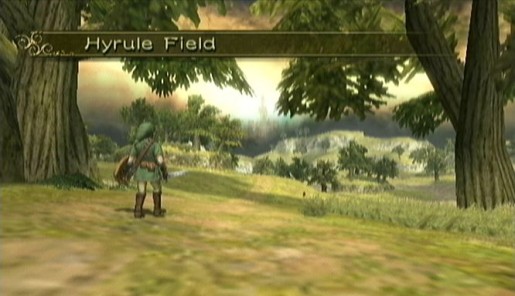
Twilight Princess gave a darker gloss to the spirit of Ocarina of Time yet it was ostensibly the same adventure. It was an eager wolf howling along to Ocarina’s song sheet, adding in its own inflections here and there, but conservative in its overall design.
As a fantasy tale Zelda doesn’t speak volumes on its own. The story of The Legend of Zelda isn’t merely what’s told in the game, but its tale of maturity and coming of age are wrapped up with our own experiences. Zelda games figured importantly in my childhood and I’m reminded of those times whenever I play it, see it played or hear its music.
Zelda games are formulaic but that’s because each new one is a retelling of that same age-old legend – maturity. There’s always a hero, always a villain and always a princess. There’s always a magic sword to wield and a hidden artefact to find. There are always puzzles to ponder and bosses to slay. There are always people growing up, starting their adventures in life, beginning as a humble child and growing into a hero of sorts. So as there will always be a new generation just starting their adventures in life, so there will always another retelling of The Legend of Zelda for this new generation to experience.
And so the legend is told again…

